Tsuba: A Guide on Japanese Sword Guards
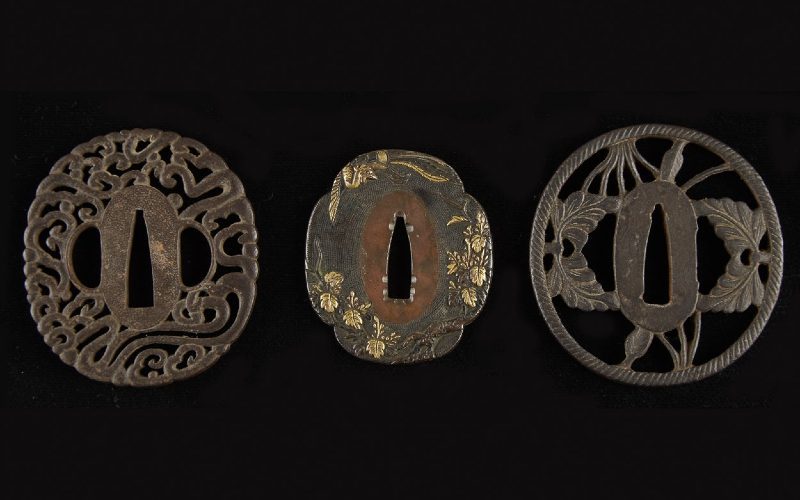
What’s in this article?
An essential part of the Japanese
Today, the Japanese tsuba are now collector’s items in their own right. Knowing the history and distinctive characteristics of these
Characteristics of the Japanese Tsuba
Mounted between the handle and the blade, the tsuba protects the user’s hand. Without it, the
Metal and Structure
Originally, tsuba makers created handguards by welding together steels of different hardness, then twisting and deforming them in various ways. The material should have the strength to withstand impact, and the most commonly used alloys are shakudo and shibuichi.
Shakudo
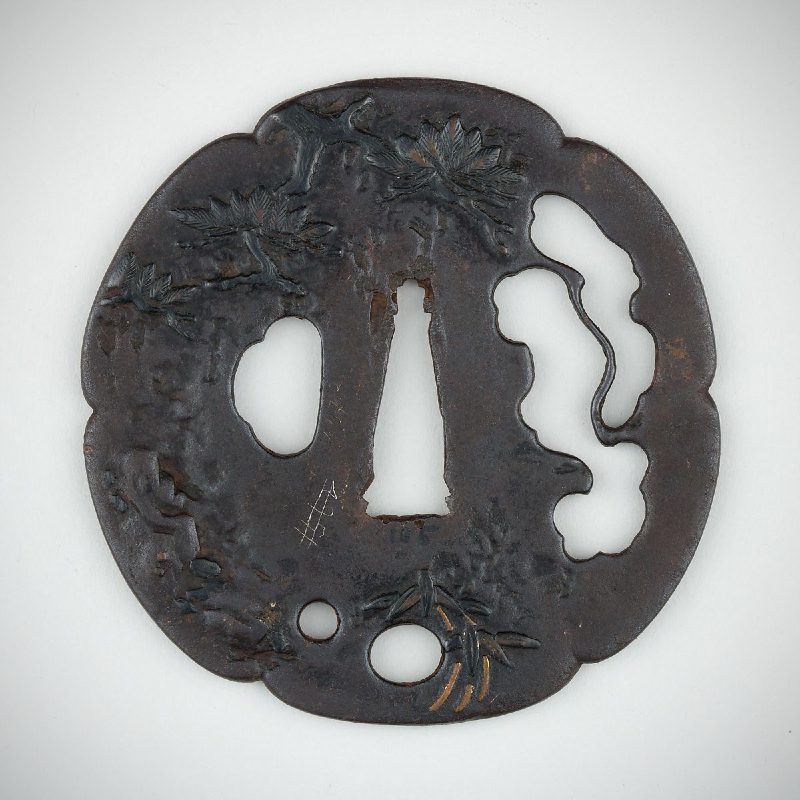
A term that literally means black gold, the shakudo is a copper alloy that contains small amounts of gold, at least 4 percent. The metal combination gives a jet black color or a blue-black color, sometimes known as crow’s gold, referring to its resemblance to the bird’s plumage.
Shibuichi
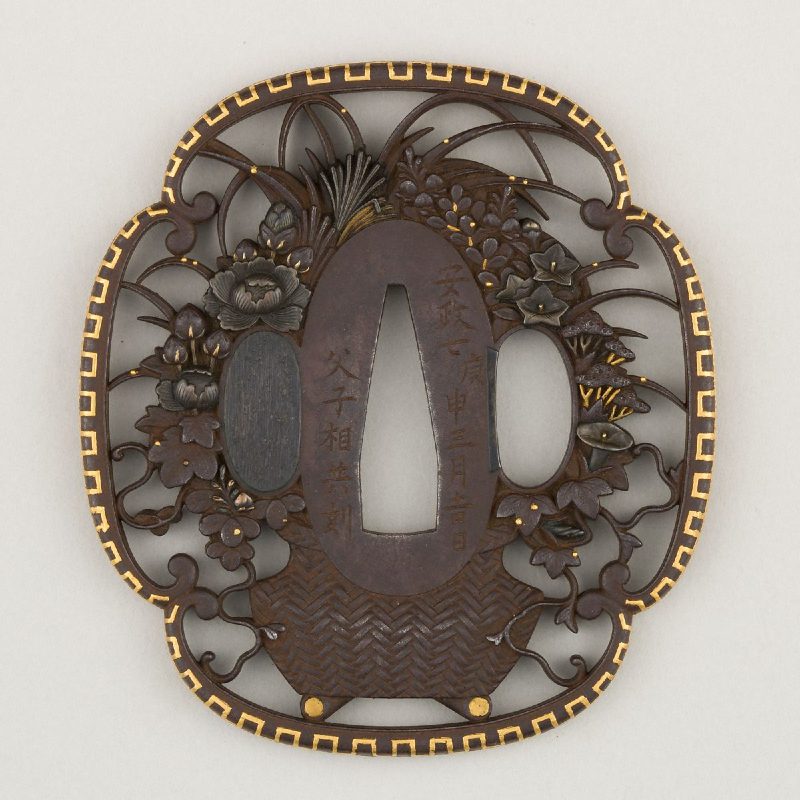
A harder alloy than shakudo, the shibuichi contains silver about a quarter of its weight. Its composition varies and usually contains copper, lead, zinc, or tin. When treated, its surface can have a brown to bright gray color.
Size and Shape
Most of the time, the Japanese tsuba are disk-shaped and elliptical. Some have a rectangular shape, often with rounded corners and slightly curved sides. On the other hand, the mokko is a four-lobed shape handguard. The tsuba ideal for battle or training must have the appropriate size and shape to protect the hand.
Design and Craftsmanship
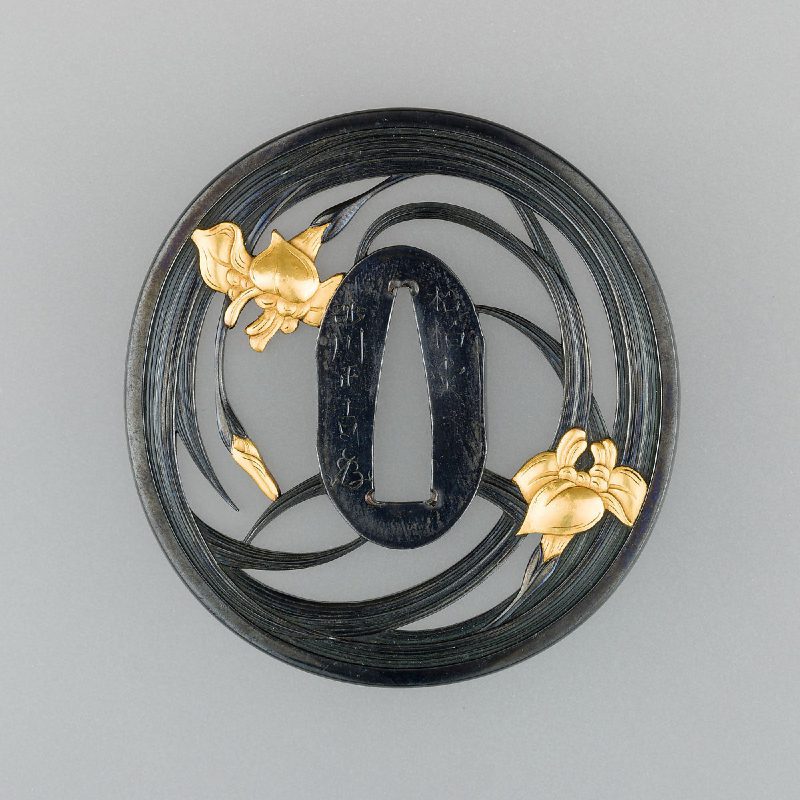
On the artistic side, we have to consider the beauty of the design, including its surface texture and color. Tsuba artisans created
However, some designs are the least functional and purely decorative. A handguard with colorful stones or high relief carving may be great for collection but is not the best for battle or training.
Parts of the Japanese Tsuba
The Japanese
Seppa-dai
The washer seat called seppa-dai is the oval outline at the center of tsuba. It is not always present, but if it is, usually left unadorned. The washer or spacer called seppa covers the area, and placed on each side of the
Nakago ana
The nakago ana is the hole at the center of the tsuba that accommodates the
Hitsu-ana
Some
For the short
[relatedview related_url=”https://adworkdesign.com/swords/daisho-sword/”]
Hira
The surface of the tsuba is called hira, which usually has a hammered or polished finish. Most iron tsuba used smooth plates and relied on decorations, from carving to inlays or openwork. Also, the patina or surface coloration gives the
Mimi
The rim of the tsuba is called mimi, sometimes folded or raised. The thickness of the rim may vary, and some may feature subtle patterns inlaid in gold.
Facts About the Japanese Tsuba
Unlike other
The tsuba was the earliest fitting used in Japanese swords.
The first
The samurai often changed their
The Japanese blades are removable from the rest of the
By the 18th and 19th centuries,
Some tsuba designs were good, but others were unsuitable for use. Tsuba artisans used several techniques in their works, such as inlaying colored stones, pearls, amber, and ivory.
Some tsuba artisans also crafted menuki and fuchi-kashira.
The elaborate mounting called koshirae even featured other metal ornaments like the kashira, a pommel cap at the top of the hilt and the fuchi, a collar at the base of the handle. Also, the menuki is a metal ornament on the side of the handle. However, some koshirae for tanto dagger had no tsuba.
The Japanese tsuba is an artwork on its own.
As the most notable
History of the Japanese Tsuba
Early Japanese tsuba designs were relatively plain and only became more decorative later. When the manufacture of
Early Designs of Japanese Tsuba

During the Kofun period from 250 to 538 CE, the toran-kai tsuba, sometimes called inverted egg tsuba, were common. The earliest tsuba was iron-made, found in the 8th-century burial mounds and earlier.
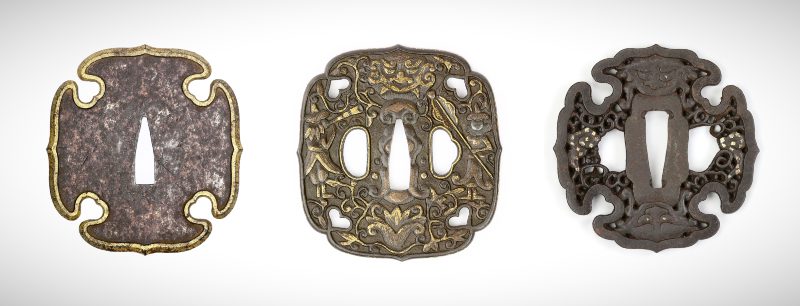
By the Heian period from 794 to 1185, the classic hollyhock-shaped tsuba called aoi-gata emerged. Westerners often describe these
From 1185 to 1333, Kamakura-period tsuba featured pierced designs, in which early makers paid attention to the edges to create effects. Some of them were
Schools of Specialized Tsuba Makers
During the Muromachi period, around 1392 to 1573, the Japanese tsuba featured carved and inlaid designs. Tsuba artisans like Kaneiye, Nobuiye, and Umetada crafted distinctive iron guards. Kaneiye was the first to inlay
The Goto School
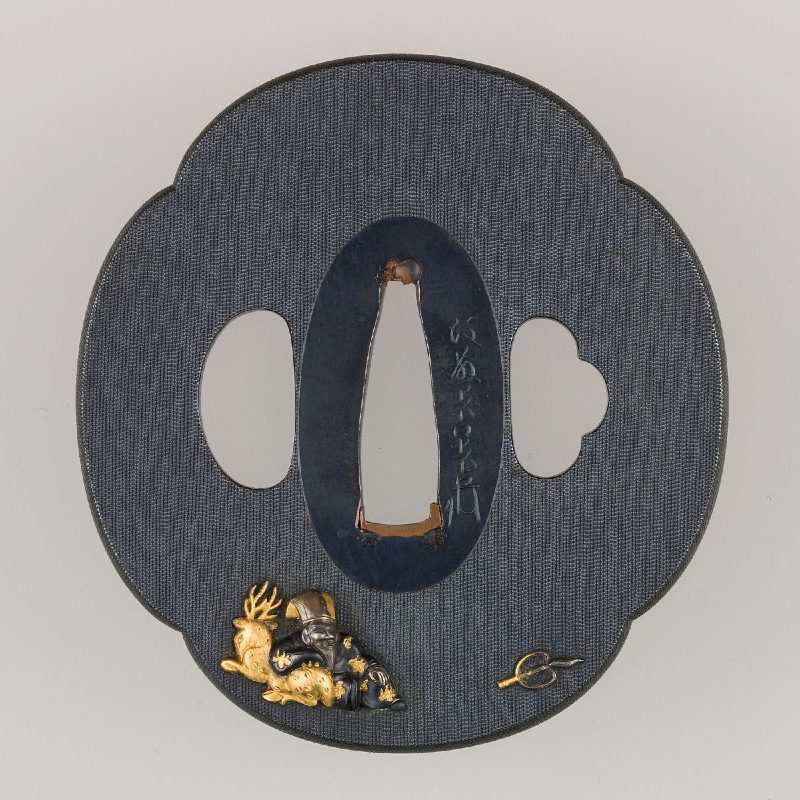
The Goto family began its work in the 15th century but only crafted
The Nara School
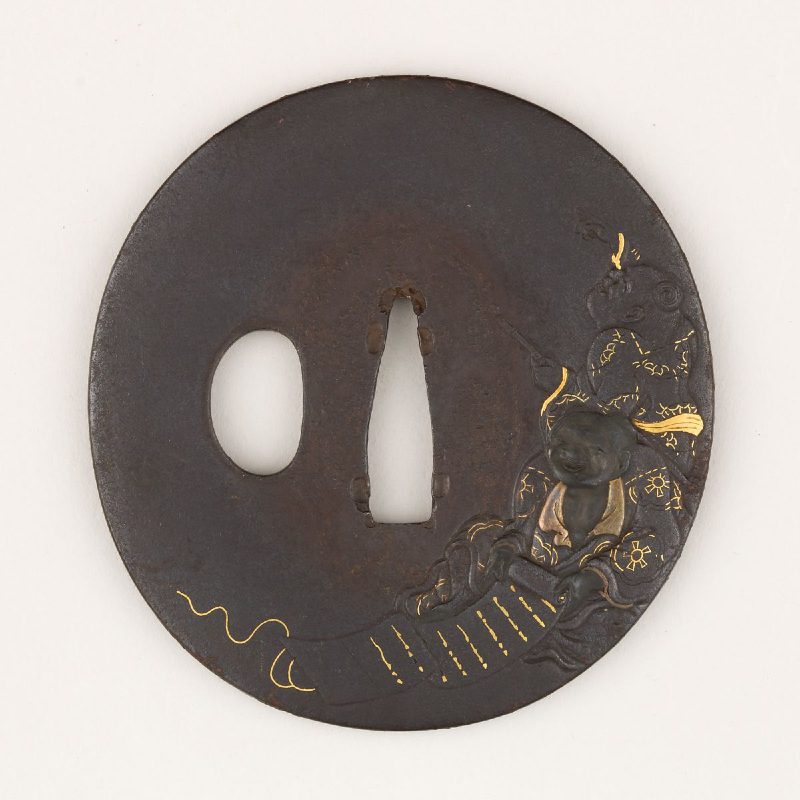
One of the offshoots of Goto was the Nara school in the early 17th century. The school portrayed pictorial subjects in less conventional ways than the Goto. Toshinaga Tahei was a very skillful chaser in high relief, while Sigura Joi did outstanding designs in low relief and engraving.
The Soten School
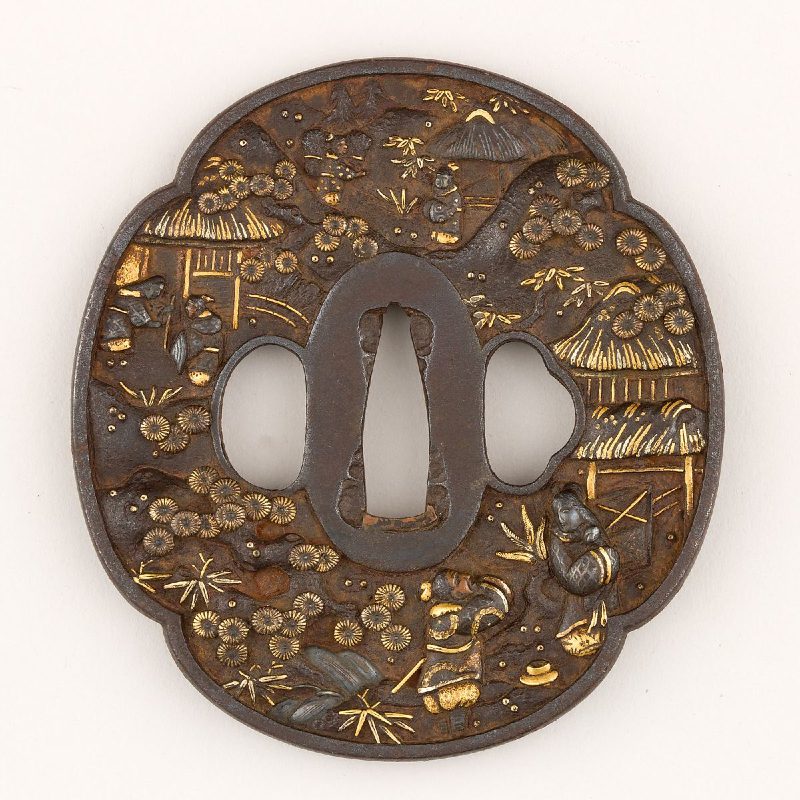
Their designs depicted figures full of individuality and highlighted the scenes from the civil wars. Unfortunately, the popularity of their style resulted in low-quality imitations, which gave the school a bad reputation.
The Yokoya School
At the end of the 17th century, Soyo I founded the Yokoya School. As a tsuba artisan to the Shogun, he was one of the most celebrated Japanese artisans. The school produced both elaborate and functional handguards.
The Kinai Masters
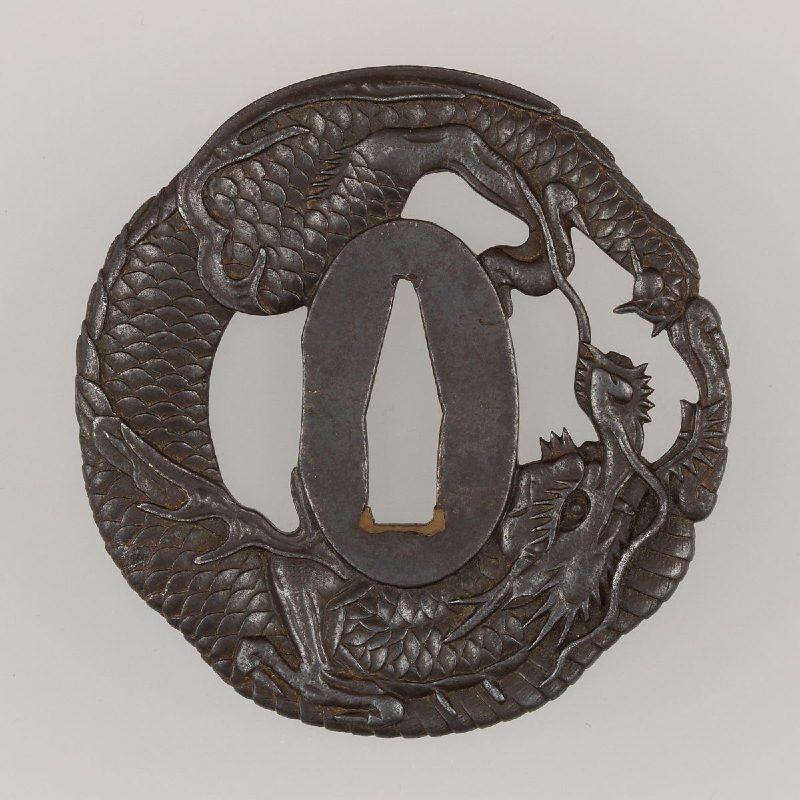
From the 17th to the 19th century, the Kinai masters popularized delicate pierced carving with little or no gold inlay, and the Kinai dragons were their best work.
The 17th-Century Nanban-Style Tsuba
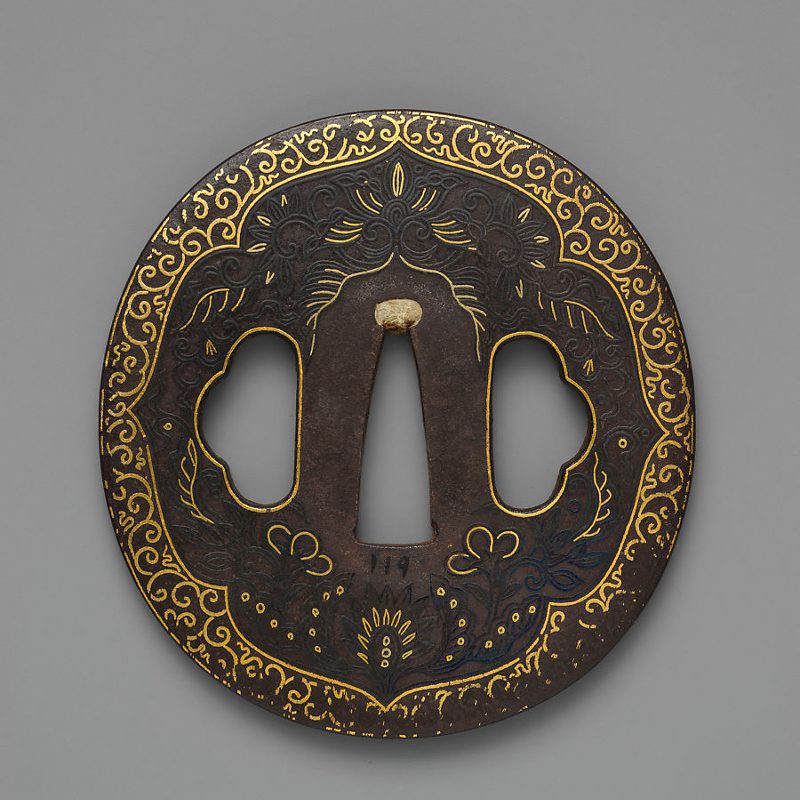
Today, the Japanese tsuba that shows strong foreign influence is referred to as nanban tsuba, which means Southern barbarian sword guards. At some point, the Japanese acquired a taste for imported Chinese saber guards called dao hushou, so they eventually used them on their swords.
When the Japanese started to craft their tsuba, many featured a strong Chinese influence. Some Japanese craftsmen crafted nanban tsuba, but some originated outside of Japan. Most
Edo-Period Japanese Tsuba
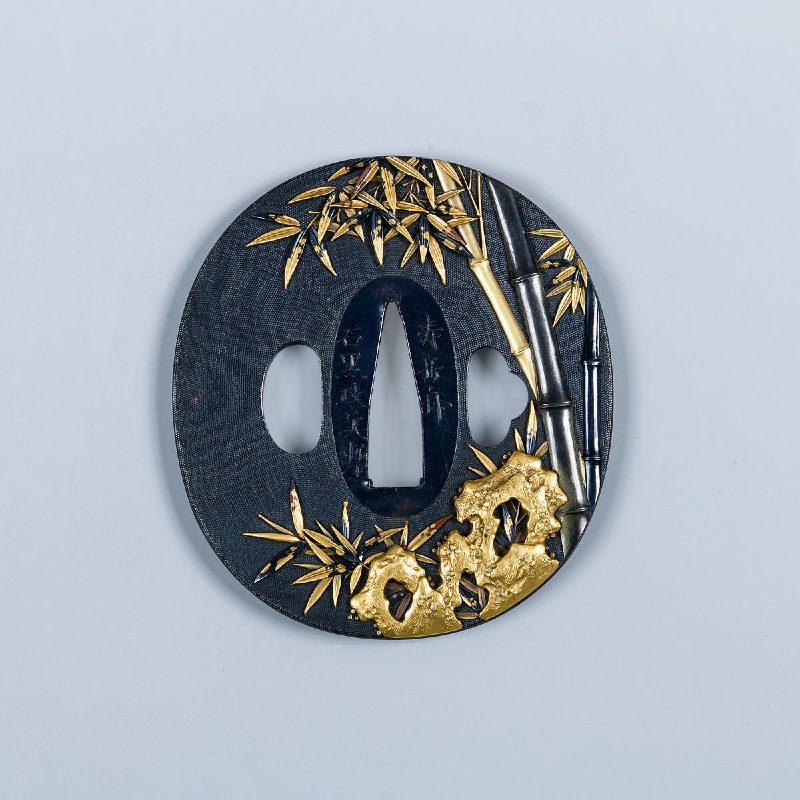
As Japan entered the more peaceful Edo period, from 1603 to 1867, the tsuba became more of an artwork rather than functional tools of war. Without battles to fight, the samurai favored more elaborate designs inspired by mythology, nature, and religion. In this time period, the most complex and ornate
Conclusion
Designed to protect the warrior’s hand, the Japanese tsuba originally had utilitarian designs. Today, these




